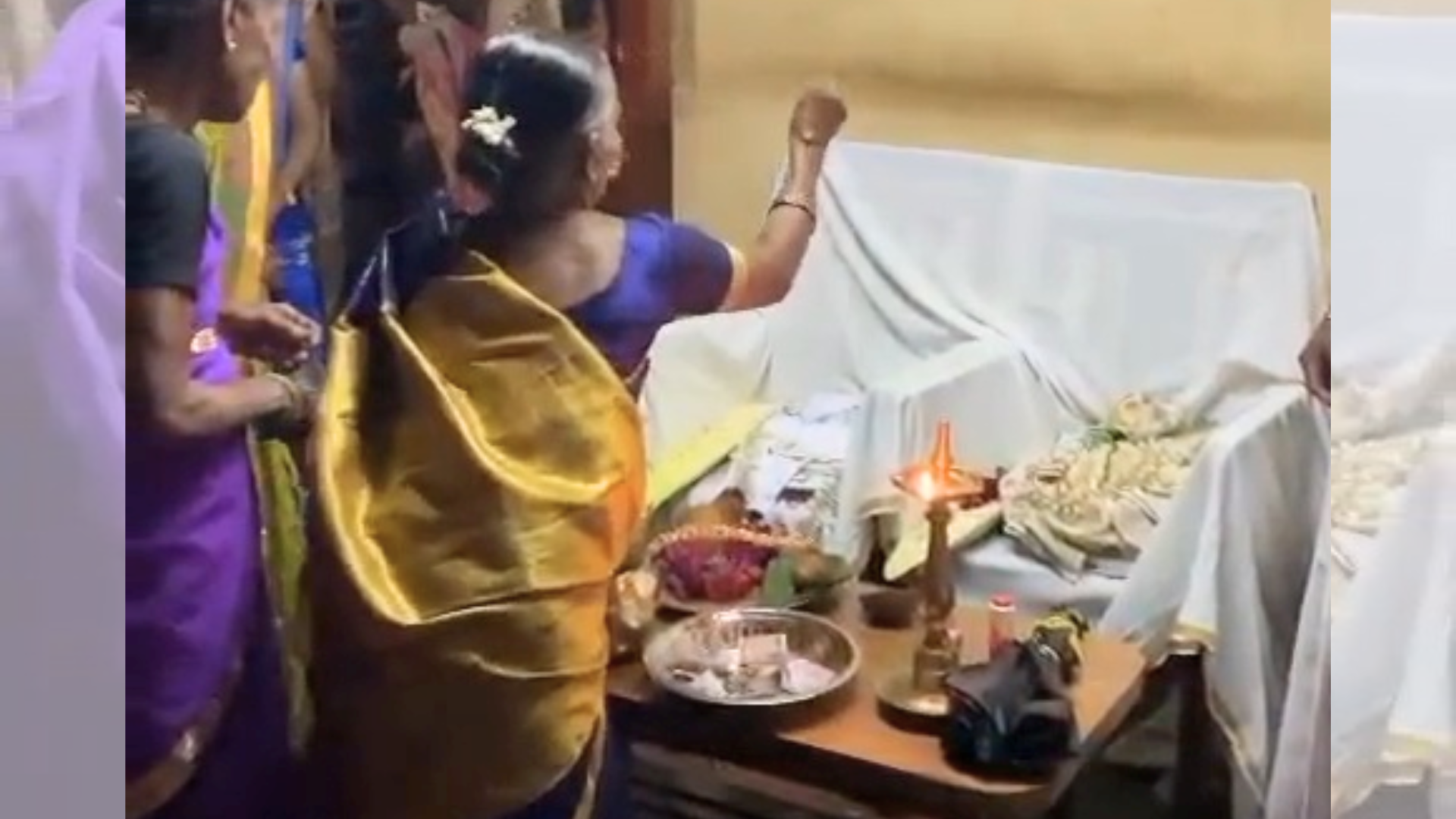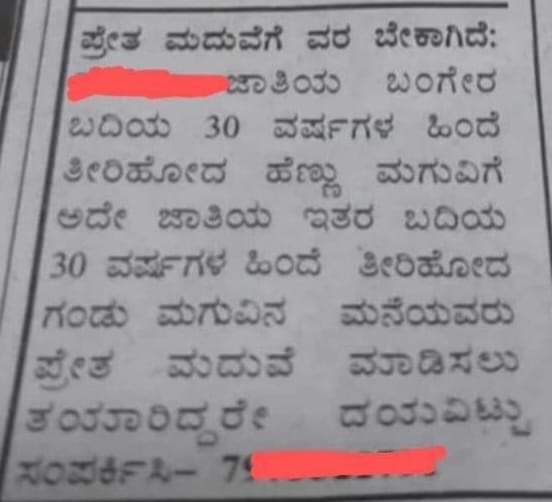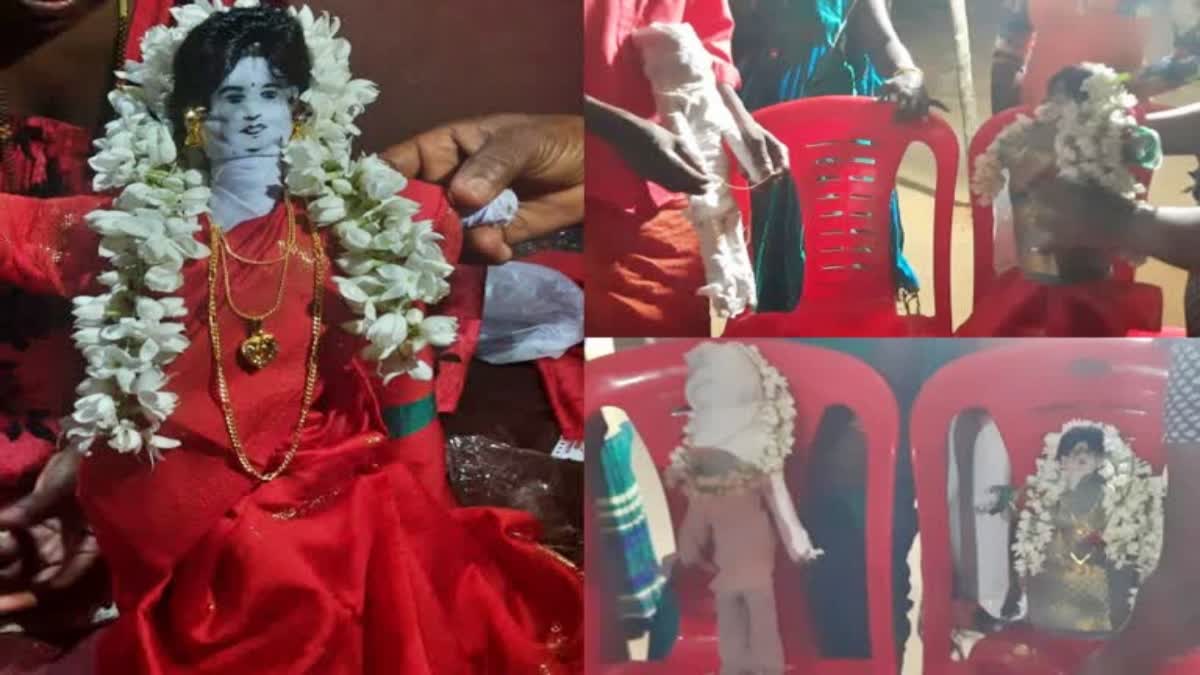When a loved one dies, people go through emotional distress, and how they express their mourning varies greatly from person to person and from culture to culture. Grieving and mourning are normal ways to deal with the passing away of a loved one. People find many different ways to deal with grief, including expressing it outwardly through rituals and religious practices.
Some Himalayan regions are a classic example of how they express their grief over the death of a young man. People wail, addressing the deceased as the groom. Similarly, they address the deceased woman as a bride on her passing. Their parents' unfulfilled desire and their never-ending pain stemming from the wish that they were unable to carry out their child's marriage, haunt them throughout their lives.
“Afterlife Wedlock Belief System”
Some communities in the coastal regions of Karnataka and Kerala want to unburden themselves of this responsibility during their lifetime by marrying off their deceased offspring through rituals. The idea that ‘marriages are made in heaven and solemnised on earth’ fits excellently for these communities. Here, the marriage between deceased men and women is conducted to have them as a couple in the afterlife, birthing the diametric opposite of ‘till death do us part’. People living in coastal villages in these twin states believe that no one should die without tasting the fruit that they attribute to marriage, hence they desire to marry off their children even after their demise. In these regions, the institution of marriage is so powerful and revered that the deceased too are part of the marital system.

“Ghost Marriage”
It has become a tradition to marry the dead, and families who lose a loved one at a young age have to follow every ritual that would have needed to be followed if the deceased had been alive. They celebrate the wedding of someone who is no longer with them and establish relationships through what they refer to as ‘Pretha Maduve’ (marriage of souls). Outlandish as it may sound, the wedding is intended to calm the spirits down. There is a general belief that years of yearning for wedlock would haunt the unwed spirits, and the deceased repeatedly remind their families of this in the latter’s dreams.
“Match Making”
To find a suitable match for their beloved son or daughter, an advertisement is published to facilitate matchmaking. They list out the expectations and hope to find the right match.
One such recent advertisement left readers agape in coastal Mangaluru city in Karnataka's Dakshina Kannada district. In it, the parents sought a ghost groom for their long-dead daughter. Yes, you read that right! In the eerie ad, the family said it was looking for a groom who must have died 30 years ago for their female child, who also passed away three decades back. The groom's family must be from the same 'Bangera' caste and ready to perform a ghost marriage, the ad stated. The family said it wanted to perform 'Pretha Maduve' (marriage of the souls).

What is 'Pretha Maduve’ and how is it performed?
Families that organise the ‘Ghost Wedding' believe that it brings together the souls of their dead children, thereby providing them with a posthumous opportunity to be married. By performing this ritual, people believe they show respect and bring peace to their dead little ones.
An astrologer is involved in fixing the auspicious time and date for the marriage. Once it is done, the marriage is fixed. The priest chants mantras before the agni (fire). Religious rituals are performed step-by-step, with participation from both families similar to what would have occurred had the bride and groom been alive.
‘Pots’, ‘Effigies’ Play Bride, Groom
Two pots representing the bride and the groom have to go through the marriage ceremony and perform the rituals. One of the pots representing the bride is adorned with jewellery. The decorated pot has to perform all the rites that every bride has to undergo. Siblings of the deceased from each side conduct the ceremonies on behalf of the bride and groom, who are kept together at the wedding venue. Garlands are exchanged and 'sindoor' is applied on the pot representing the bride, by their siblings. The adorned pot bride is decorated in a sari, anklets, and rings, which are traditionally worn by married women in South India. Beside the bride is another pot that will be painted and clothed in a masculine outfit with a turban on top to symbolise the groom. The bride's pot is adorned with black pearls and jasmine flowers. In some places like Kerala's Kasaragod, they use scaled-down effigies of the deceased to denote the bride and the groom.
“Relatives For Life”
In commemoration of this significant day, both sides' immediate families join for a wedding feast. Delicious dishes are served on banana leaves, which makes for an enjoyable ending to this unique blend of piety and celebration. The marriage takes place in the groom's house, and the bride is taken to the groom's residence. The families begin their journey as relatives for life and keep visiting each other as frequently as they would have visited had their children been alive.
[A version of this story was published with a video by ETV Bharat Kerala. Another version of the story published by ETV Bharat Karnataka.]
Read More



